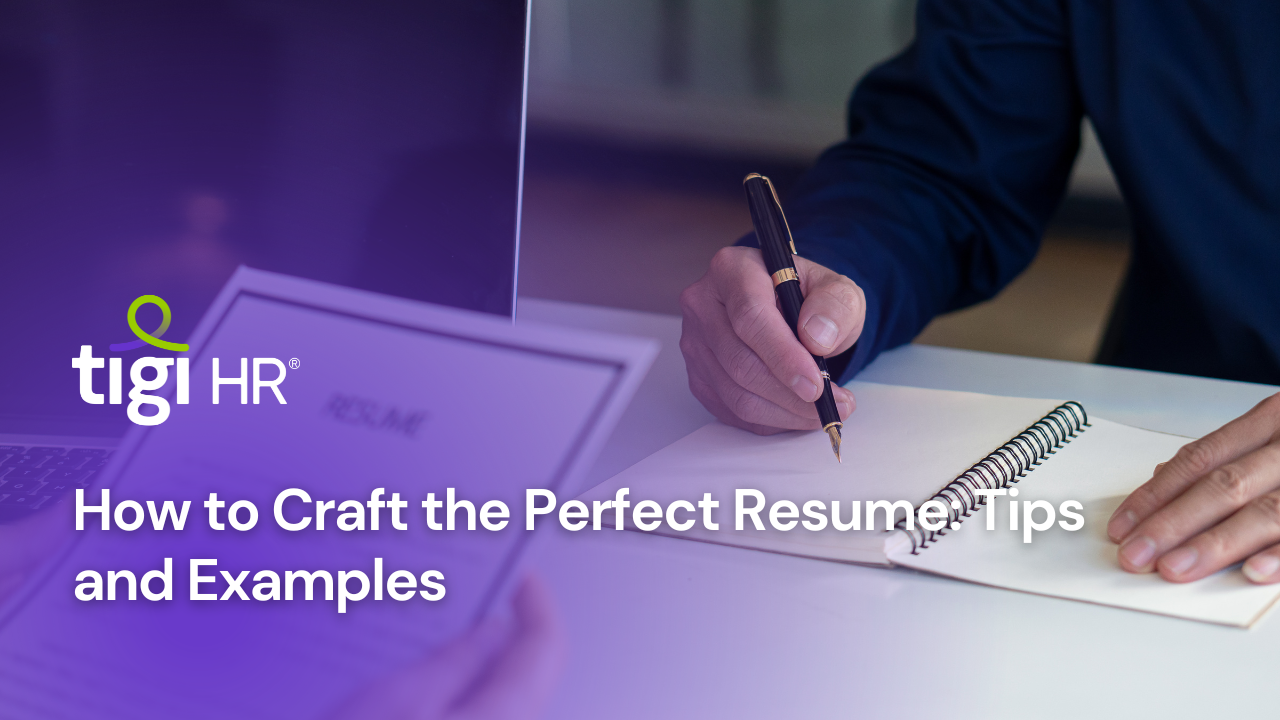In today’s competitive job market, a well-crafted resume is your ticket to landing that dream job. Your resume serves as your first impression on potential employers, and it’s crucial to make it stand out from the rest. To help you create the perfect resume, this comprehensive guide will provide you with valuable tips and real-life examples. Whether you’re a recent graduate or an experienced professional looking to switch careers, we’ve got you covered.
Chapter 1: Understanding the Purpose of a Perfect Resume
Before we dive into the tips and examples, it’s essential to understand the primary purpose of a resume. A resume is a concise summary of your professional background, skills, accomplishments, and qualifications. Its main goals are:
- To showcase your qualifications: Your resume should highlight your relevant education, work experience, and skills.
- To demonstrate your suitability: It should demonstrate why you are the ideal candidate for the job.
- To grab the employer’s attention: A well-crafted resume should immediately capture the employer’s interest.
Chapter 2: Resume Formatting and Structure
2.1 Choosing the Right Resume Format
There are several resume formats to choose from, including:
- Chronological: Lists work experience in reverse chronological order, starting with the most recent job.
- Functional: Emphasizes skills and qualifications rather than work history.
- Combination: A blend of chronological and functional, showcasing both skills and work history.
The choice of format depends on your career stage and the specific job you’re applying for. For example, a chronological format is ideal for those with a consistent work history, while a functional format may benefit those with gaps in employment.
2.2 Length and Clarity
Keep your resume concise and clear. Ideally, it should be one page for those with less than five years of experience and no more than two pages for those with extensive experience. Use clear headings, bullet points, and a consistent font style and size for readability.
2.3 Sections to Include
A well-structured resume typically includes the following sections:
- Contact Information: Include your name, phone number, email address, and LinkedIn profile (if applicable).
- Objective or Summary: A brief statement highlighting your career goals and what you bring to the table.
- Education: List your degrees, institutions, graduation dates, and relevant honors or awards.
- Work Experience: Detail your relevant work history, including job titles, companies, dates, and key responsibilities and achievements.
- Skills: Highlight your relevant skills, including technical, soft, and language skills.
- Certifications and Training: List any relevant certifications, courses, or training programs you’ve completed.
- Projects or Portfolio: If applicable, showcase projects or work samples that demonstrate your skills and accomplishments.
- References: You can either include references or state that they are available upon request.
Chapter 3: Writing Your Resume
3.1 Tailor Your Resume to the Job
Each job application should have a unique resume tailored to the specific position. Study the job description and company culture to understand what the employer is looking for, and then customize your resume accordingly. Highlight your qualifications and experiences that align with the job requirements.
3.2 Use Action Verbs
Start bullet points in your work experience section with strong action verbs. These verbs make your accomplishments more impactful. For example:
- Managed a team of 10 employees, resulting in a 20% increase in productivity.
- Developed and implemented a new marketing strategy, leading to a 15% growth in sales.
3.3 Quantify Your Achievements
Use numbers and statistics to quantify your achievements wherever possible. This provides concrete evidence of your impact and capabilities. For instance:
- “Increased website traffic by 50% within six months.”
- “Generated $1.5 million in sales revenue in the first quarter.”
3.4 Highlight Relevant Skills
Ensure that your skills section reflects the skills mentioned in the job description. Include both hard and soft skills, such as technical proficiencies, project management abilities, and communication skills.
3.5 Be Honest and Avoid Jargon
Honesty is key on your resume. Avoid exaggerating or providing false information. Also, steer clear of industry-specific jargon that might not be understood by all readers.
Chapter 4: Resume Examples
To help you better understand how to apply these tips, let’s look at some real-life resume examples:
Example 1: Entry-Level Resume
[Your Name]
[Your Address]
[City, State ZIP Code]
[Your Phone Number]
[Your Email Address]
[LinkedIn Profile]
Objective:
Recent graduate with a Bachelor's in Marketing seeking an entry-level marketing position. Eager to apply my strong analytical skills and creativity to contribute to a dynamic marketing team.
Education:
- Bachelor of Science in Marketing
XYZ University
Graduated: May 20XX
GPA: 3.6/4.0
Skills:
- Digital Marketing
- Social Media Management
- Data Analysis
- Market Research
- Adobe Creative Suite
Projects:
- Created and executed a digital marketing campaign for a class project, resulting in a 25% increase in website traffic.
- Conducted market research for a local startup, identifying key target demographics.Example 2: Experienced Professional Resume
[Your Name]
[Your Address]
[City, State ZIP Code]
[Your Phone Number]
[Your Email Address]
[LinkedIn Profile]
Objective:
Results-driven marketing manager with 10+ years of experience seeking a leadership role to leverage my expertise in developing and executing data-driven marketing strategies.
Education:
- Master of Business Administration (MBA)
ABC University
Graduated: May 20XX
Work Experience:
- Senior Marketing Manager
XYZ Corporation
January 20XX - Present
- Led a team of five marketers, resulting in a 30% increase in ROI.
- Developed and implemented a content marketing strategy that increased website traffic by 40%.
- Managed a $2 million annual marketing budget.
Skills:
- Marketing Strategy
- Team Leadership
- Data Analysis
- Budget Management
- SEO/SEM
Certifications:
- Google Analytics Certified
- HubSpot Inbound Marketing CertifiedChapter 5: Additional Tips
5.1 Proofread and Edit
A single typo can make a negative impression. Carefully proofread your resume and consider asking a friend or professional for feedback.
5.2 Keep It Updated
Regularly update your resume to include new skills, accomplishments, and experiences. This ensures that your resume is ready for any job opportunity that comes your way.
5.3 Make It ATS-Friendly
Many companies use Applicant Tracking Systems (ATS) to screen resumes. To pass through these systems, use keywords from the job description and avoid using images, graphics, or unusual fonts.
Conclusion on Perfect Resume
Crafting the perfect resume is an art and a science. It requires careful consideration of structure, content, and customization to make a lasting impression on potential employers. By following the tips and examples in this guide, you’ll be well on your way to creating a resume that opens doors to exciting career opportunities.
Remember, your resume is a reflection of your professional journey and capabilities. Take the time to invest in it, and
it will undoubtedly pay off in your job search success.
Now, go ahead and create that perfect resume that will help you land your dream job! Good luck!
Also Explore: Worklife Balance





